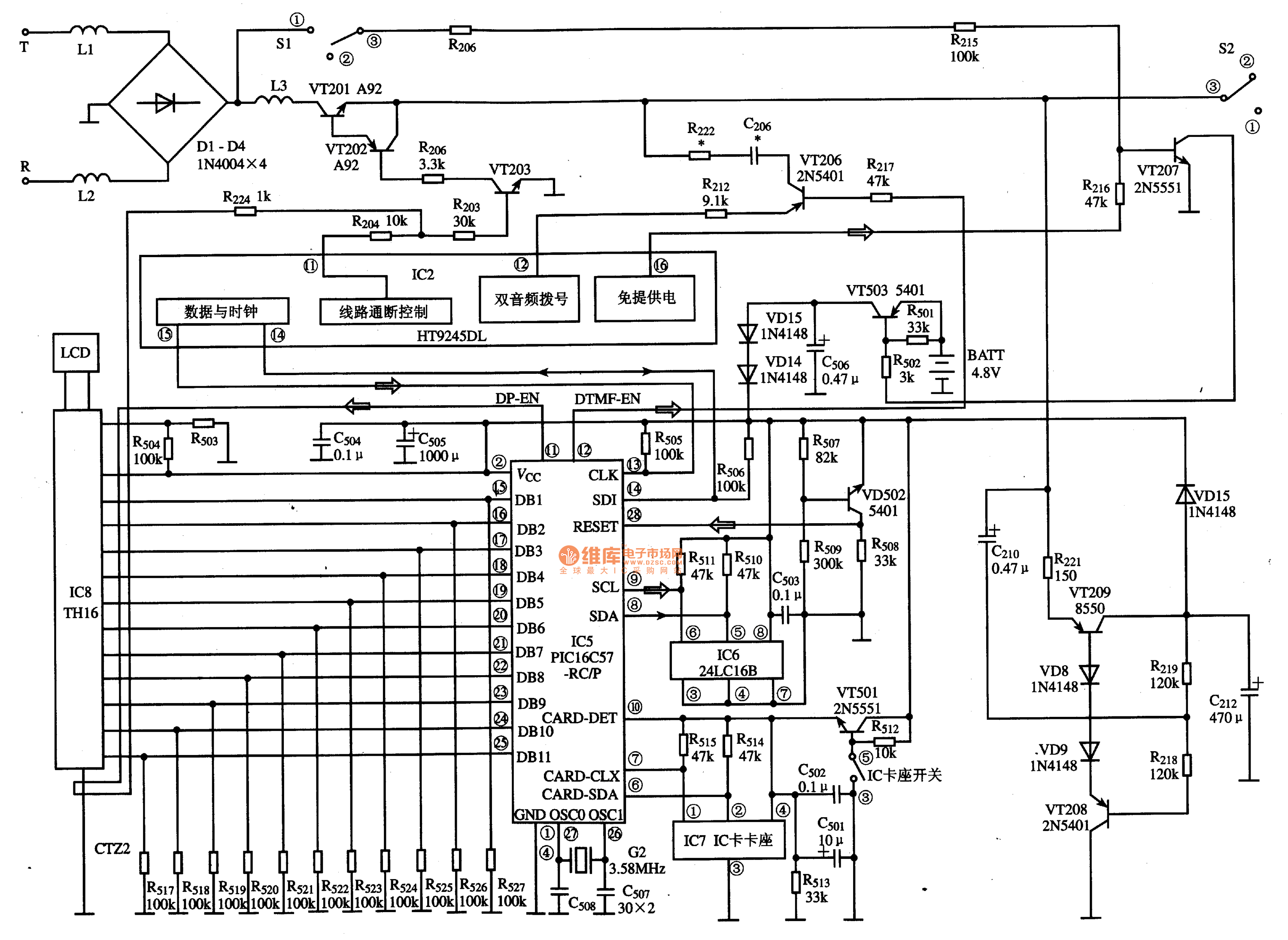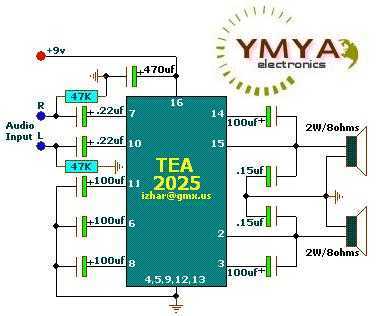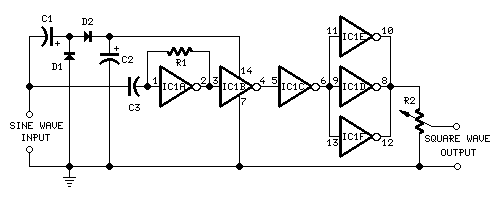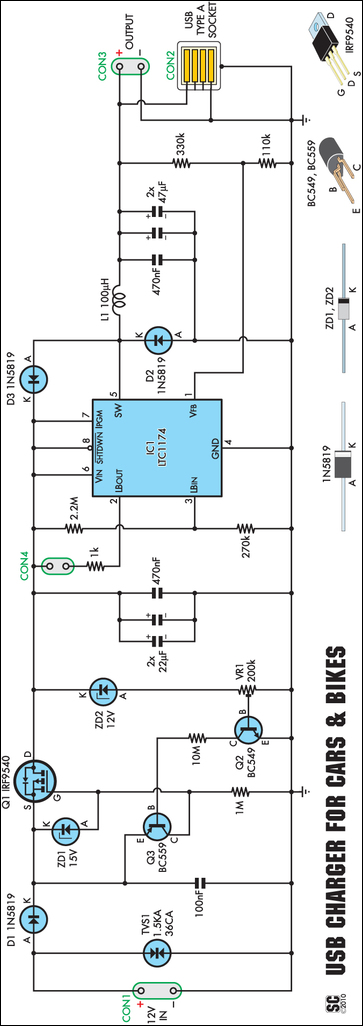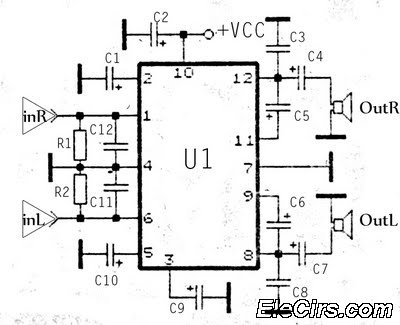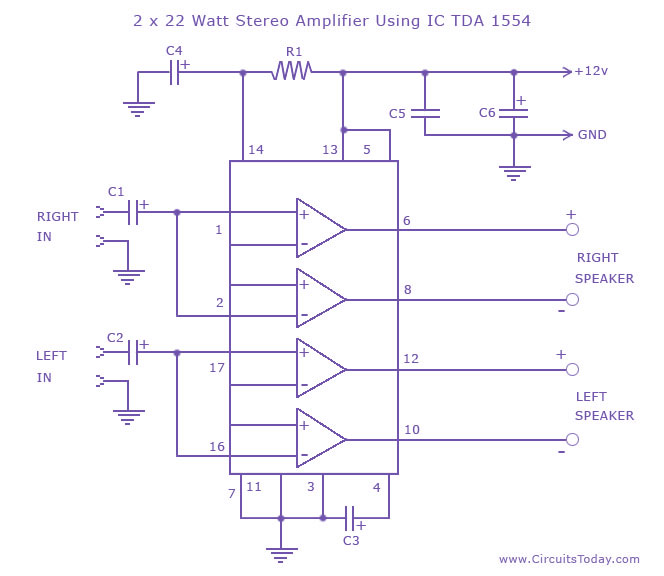
USB Powered Stereo Computer Speaker
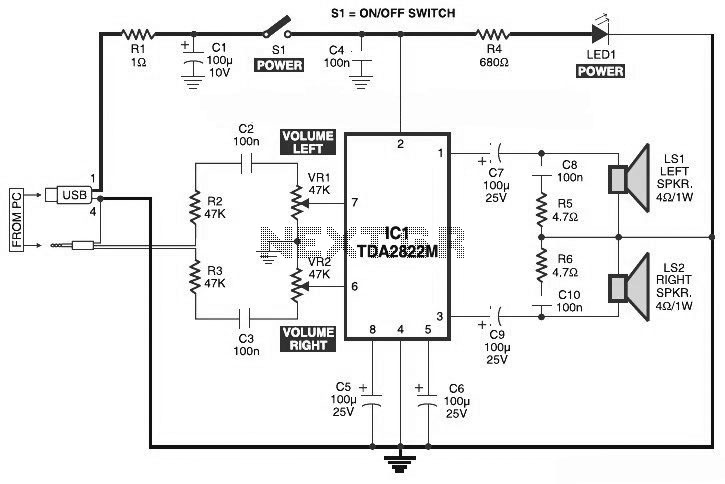
This is the circuit diagram of a USB-powered computer speaker, commonly known as multimedia speakers for PCs. The circuit features a single-chip design, operates on a low-voltage power supply, and is compatible with USB power from a computer.
The USB-powered computer speaker circuit is designed to efficiently convert the USB power supply into audio output suitable for multimedia applications. The circuit typically includes a single integrated circuit (IC) that serves as both the amplifier and the audio processing unit. This design minimizes component count and reduces the overall size of the speaker system, making it ideal for portable and desktop use.
The power supply from the USB port provides a nominal voltage of 5V, which is sufficient for driving small speakers. The circuit may include a voltage regulator to ensure stable operation and prevent fluctuations that could affect audio quality. Additionally, capacitors are employed to filter out noise and stabilize the power supply.
The audio input is usually taken from the computer's audio output, which can be connected via a standard 3.5mm jack. The circuit may also feature an onboard volume control, allowing the user to adjust the sound level conveniently. Output transistors or additional amplification stages may be included to drive the speaker drivers effectively, ensuring clear and loud sound reproduction.
In summary, the USB-powered computer speaker circuit is a compact and efficient solution for multimedia audio output, leveraging a single-chip design for simplicity and ease of integration with computer systems.This is the circuit diagram of USB powered computer speaker, or it widely known as multimedia speakers for PCs. The circuit has single-chipbased design, low-voltage electrical power supply, compatibility with USB power from computer, simple..
🔗 External reference
The USB-powered computer speaker circuit is designed to efficiently convert the USB power supply into audio output suitable for multimedia applications. The circuit typically includes a single integrated circuit (IC) that serves as both the amplifier and the audio processing unit. This design minimizes component count and reduces the overall size of the speaker system, making it ideal for portable and desktop use.
The power supply from the USB port provides a nominal voltage of 5V, which is sufficient for driving small speakers. The circuit may include a voltage regulator to ensure stable operation and prevent fluctuations that could affect audio quality. Additionally, capacitors are employed to filter out noise and stabilize the power supply.
The audio input is usually taken from the computer's audio output, which can be connected via a standard 3.5mm jack. The circuit may also feature an onboard volume control, allowing the user to adjust the sound level conveniently. Output transistors or additional amplification stages may be included to drive the speaker drivers effectively, ensuring clear and loud sound reproduction.
In summary, the USB-powered computer speaker circuit is a compact and efficient solution for multimedia audio output, leveraging a single-chip design for simplicity and ease of integration with computer systems.This is the circuit diagram of USB powered computer speaker, or it widely known as multimedia speakers for PCs. The circuit has single-chipbased design, low-voltage electrical power supply, compatibility with USB power from computer, simple..
🔗 External reference
